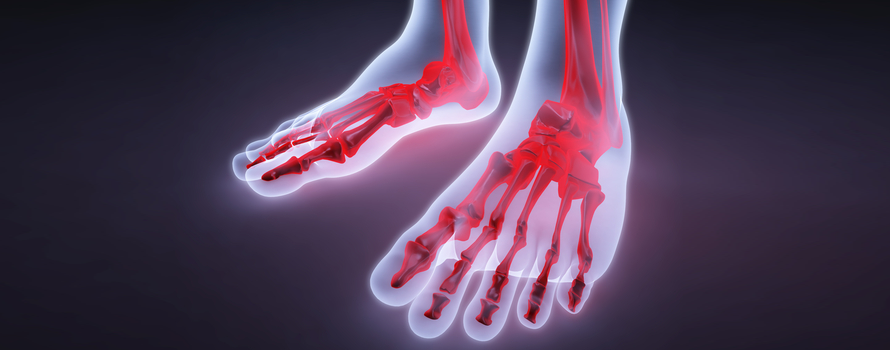What is Gout?
Gout is a type of arthritis caused by the build-up of crystals in the body. It is more common in adult men. Men are four times more likely to develop gout than women.
What causes gout?
Gout is caused by excess build up of a waste product called uric acid that naturally occurs in the body. In gout, a person either makes too much uric acid or is unable to excrete the uric acid. The uric acid forms crystals that are deposited in different parts of the body usually the joints of the ankle, knee, foot, hand, wrist or elbow.
Gout appears to run in families. Some medications (e.g., diuretics) can prevent uric acid from being properly excreted by the body. Alcohol and certain foods (eg. seafood and liver) and beverages (eg. coffee and tea) may contribute to the incidence of gout. Acute gout may be triggered by traumatic events such as surgery, stroke or a heart attack.
Symptoms of gout
Gout develops over time as the uric acid increases in the bloodstream. The most common first symptom of gout is usually extreme pain in the big toe. The joint at the base of the big toe becomes swollen and the skin becomes shiny and purple. The toe becomes very tender and it is difficult to wear a shoe on the affected foot or even tolerate the weight of bed sheets at night.
The first bout usually subsides after a week. Attacks may become more frequent, longer lasting and often involve more joints. Repeated episodes of gout can lead to arthritic damage to the foot.
If gout is left untreated, the crystals becomes deposited under the surface of the skin in the soft tissues and form small bumps near the joints called ‘tophi’. These commonly occur in the fingers and toes, at the backs of the elbows, behind the heels or around the edges of the ears.
How is gout diagnosed?
To diagnose gout, the doctor will usually carry out a physical examination and perform a urine test. The urine test will be used to measure the amount of uric acid in your body. The doctor may also insert a needle into the painful joint to take a sample of joint fluid for testing. The fluid is then examined under a microscope in a hospital laboratory for the presence of uric acid crystals. Blood tests can also reveal abnormally high levels of uric acid. Although having high levels of uric acid in your blood does not necessarily mean you have gout.
How is gout treated?
Although there is no cure for gout, there are number of ways to provide relief from the attacks. A 24-hour urine test is important for determining the cause of gout and can assist the doctor in advising on an appropriate treatment plan. It is important for you to visit your GP, as medication may be required to treat gout.
Gout is usually treated with non-steroidal anti-inflammatory drugs (NSAIDs), which help to reduce the pain and swelling of joints, as well as decrease stiffness. Painkillers do not have anti-inflammatory properties so may not give adequate pain relief. Aspirin is not advisable as this increases the uric acid in the body.
Most attacks of gout last around a week. After the inflammation has subsided, medication can usually be discontinued.
Diet is also important in preventing further attacks of gout. Certain foods, such as red meat (particularly offal such as liver and kidney) and certain oily fish (such as anchovies or sardines) should be avoided. Alcohol can also can raise uric acid levels. Maintaining a healthy weight is important.




